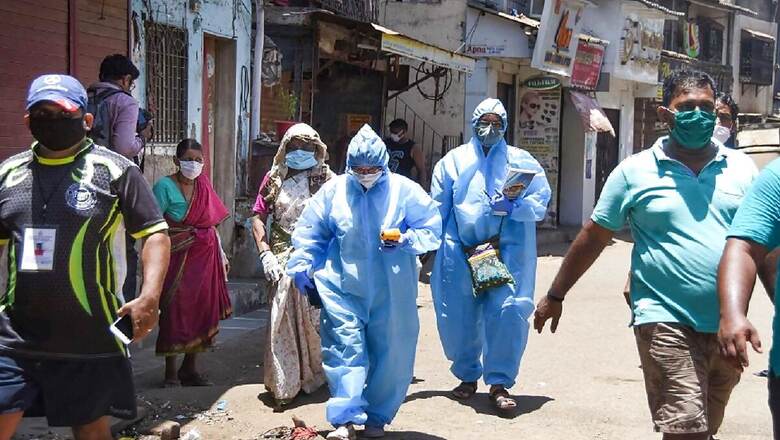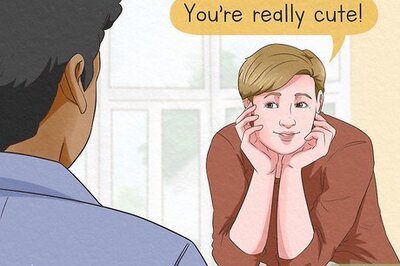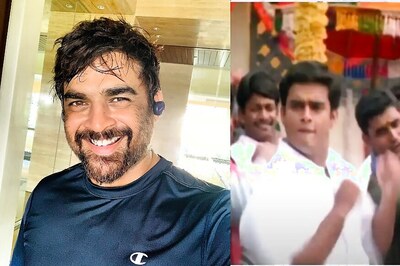
views
Last year, Dharavi, which is one of the most densely populated areas of Mumbai, managed to achieve the unthinkable. As the rest of India grappled with the rising cases of COVID-19, Dharavi flattened the curve, despite being home to over 6 lakh people who do not have the privilege of practising social distancing in their congested hutments. It was a feat lauded by the Union Health Ministry as well as the World Health Organisation (WHO).
The ‘Dharavi Model’ of COVID-19 management worked effectively because of the aggressive strategies devised by BMC to tackle the COVID-19 virus, coupled with a strong community engagement. In fact, last year, on December 25, Dharavi did not register any new COVID cases for the second time since coronavirus arrived in its slums in April 2020. This year too, began on a good note. In January, Dharavi reported zero cases three times. And, as the COVID-19 cases resurged in Mumbai in the past few months, Dharavi has managed to put up a fierce fight against the second wave as well.
The total number of cases in Mumbai has already crossed the 5-lakh mark to which Dharavi contributes only 5,676 cases, despite its high population density. The latest daily COVID-19 case count in Dharavi stands at 76 (on Sunday), which is meagre compared to Mumbai’s daily caseload, a little over 9000 (on an average) in the past few days.
Governmental and non-government authorities, as well as medical practitioners believe that a combination of factors — from natural antibodies due to early exposure during the first wave to the quick collaboration of public and private stakeholders, as well as the ongoing vaccination drive — are responsible for Dharavi’s resilient response to the second wave. They are hopeful that Dharavi will be able to emerge victorious from its second fight against COVID-19 as well.
The Antibody Factor
Carlyle Pereira, Chief Programme Officer of ARMMAN, an NGO that works in Dharavi and promotes mother and child health, pointed out that his general observation has been that COVID-19 isn’t impacting the slum population as severely as the building residents.
” We have noticed this trend from the beginning. We were initially afraid that there will be total exposure in the slums during the first wave. But, that did not happen. It is not that the slum population was not affected, but considering the population density, the cases were comparatively lower, and still are,” said Pereira.
A Sero-Surveillance study conducted last year in Mumbai revealed that 57 per cent of the slum population in three civic wards had developed antibodies (during the first wave). In contrast, only 16 per cent of the non-slum population had antibody against the virus. Although the study was not conducted in Dharavi (the sample group was chosen from Dahisar, Chembur and Sion-Matunga), it demonstrates why the building population is likely to be more vulnerable during the second wave as compared to slum dwellers.
Dr Ravikant Singh, Founder of Doctor For You, pointed out that the slum population is registering lesser cases compared to the building population because the circulation of the COVID-19 virus during the first wave was high among slum dwellers. Therefore, they have developed antibodies against the virus.
“During the first wave, everyone was terrified of the COVID-19 virus. So, those with means and privilege had stayed indoors and maintained the lockdown rules very rigorously. But, the slum dwellers, who did not have the privilege of social distancing, were far more exposed to the virus. Thus, chances are, they have already been infected once and have natural antibodies against the virus, and hence have reduced risks of getting infected during the second wave,” said Singh.
“The same is not true for building residents. After the first wave, as soon as the vaccines became available, an obvious complacency set in among these people. They began to take the COVID situation far more lightly. From weddings to mall trips to travel, they resumed life as if COVID-19 wasn’t there at all, and this is the population that was unexposed during the first wave, so the second wave hit them hard. It also did not help that this time around, we have a double mutant virus, which spreads faster and is more severe,” added Dr Singh.
Proactive Authorities
One of the things that have worked in Dharavi’s favour is that the authorities have never dropped the ball, even after the first wave ebbed. Suresh Kakani, Additional Municipal Commissioner (health), pointed out that in Dharavi, the regular door-to-door survey to identify the ILI (Influenza-like symptoms) patients is already happening.
“We are also testing them actively. Apart from that, we have roped in Dharavi based private general practitioners to work on COVID-19. They are sharing daily information with us so that we are better equipped to deal with the current situation,” said Kakani. “The mobile clinics have already been stationed in densely populated areas,” he added.
Kakani pointed out that one of the reasons that BMC has been able to address the COVID-19 situation in Dharavi effectively is the success of the ‘My Family My Responsibility’ campaign, which helped them identify symptomatic patients as well as those with comorbidities in the slums. The campaign received a good response from the slum dwellers since they are heavily dependent on the public healthcare system and, therefore, more open to surveys, testing etc. However, the same is not valid for non-slum dwellers, who can also avail private healthcare, and thus, were not as forthcoming in terms of participation.
“Our multi-pronged strategy is working very well in densely populated areas; it also helps that slum population follow all the rules and regulations, and all the instructions which are given to them. Another thing that helps us control the spread of COVID among slum dwellers is that we can isolate them in the initial stages and shift them to quarantine facilities, thereby stopping them from infecting more,” said Kakani.
Nonetheless, he pointed out that the same is not working in buildings because, according to government rules, if someone is asymptomatic, they can home quarantine themselves. Therefore, they cannot be isolated in the early stages.
“However, we are hopeful that the cases in buildings will come under control as well. In the past week, we have seen that the cases per day have settled to around 9000 from the initial 11000 mark. The positive rate is also going down from 24 – 25 per cent; it has come down to 17 per cent,” concluded Kakani.
Vaccination Drive
So far, although the cases are low (compared to the population density), one of the challenges that Dharavi has faced is the vaccine hesitancy which is high among slum dwellers. Media reports claim that on the first day of the vaccination drive, Dharavi received a tepid response with only a few people turning up for the shot. Therefore, currently, the focus is still vaccination for governmental as well as non-governmental bodies.
” During the first wave, we had all started working in the slum areas rather early. But, as the second wave surge since the slums is not so badly affected yet, the emphasis so far is on getting people vaccinated,” said Venessa D’Souza, the CEO of SNEHA Foundation, an NGO that works in many pockets of Dharavi.
“Our efforts have been primarily to support the government. In Dharavi, for instance, we are assisting the administration through volunteers who conduct COVID screening. But our main aim at this point is to convince people to take the vaccine. It will obviously take time, and a lot of work has to be done to communicate the need for a vaccine and counsel them to overcome their hesitancy,” she added.
These days local health workers are going door-to-door for vaccine counselling so that more people can have immunity against COVID-19 in Dharavi. BMC vans are making rounds and all the necessary vaccine-related announcements; a new vaccine hub has also been set up to make the process more convenient.
Read all the Latest News, Breaking News and Coronavirus News here. Follow us on Facebook, Twitter and Telegram.




















Comments
0 comment